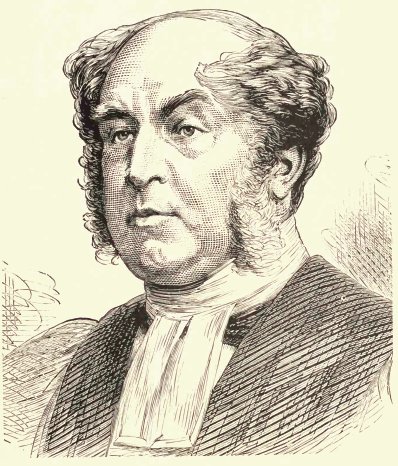David Anderson (bishop) on:
[Wikipedia]
[Google]
[Amazon]

 David Anderson (10 February 1814 – 5 November 1885) was a
David Anderson (10 February 1814 – 5 November 1885) was a
p. 11
— Anderson was the bishop of the "Far West" referred to by the Victoria Diocesan Handbook and consecrated in the same service as
Biography at the ''Dictionary of Canadian Biography Online''
from

 David Anderson (10 February 1814 – 5 November 1885) was a
David Anderson (10 February 1814 – 5 November 1885) was a Church of England
The Church of England (C of E) is the established Christian church in England and the mother church of the international Anglican Communion. It traces its history to the Christian church recorded as existing in the Roman province of Britai ...
priest and the first bishop of Rupert's Land
Rupert's Land (french: Terre de Rupert), or Prince Rupert's Land (french: Terre du Prince Rupert, link=no), was a territory in British North America which comprised the Hudson Bay drainage basin; this was further extended from Rupert's Land ...
, Canada.
Career
Born in London, England, Anderson was educated atUniversity of Edinburgh
The University of Edinburgh ( sco, University o Edinburgh, gd, Oilthigh Dhùn Èideann; abbreviated as ''Edin.'' in post-nominals) is a public research university based in Edinburgh, Scotland. Granted a royal charter by King James VI in 15 ...
and Exeter College, Oxford
(Let Exeter Flourish)
, old_names = ''Stapeldon Hall''
, named_for = Walter de Stapledon, Bishop of Exeter
, established =
, sister_college = Emmanuel College, Cambridge
, rector = Sir Richard Trainor
...
. He was the vice-principal
In larger school systems, a head teacher principal is often assisted by someone known as a vice-principal, deputy principal, or assistant/associate principal. Unlike the principal, the vice-principal does not have quite the decision-making authorit ...
of St Bees Theological College, Cumberland (1841–1847) and an incumbent
The incumbent is the current holder of an office or position, usually in relation to an election. In an election for president, the incumbent is the person holding or acting in the office of president before the election, whether seeking re-el ...
of All Saint's, Derby
The Cathedral Church of All Saints Derby, better known as Derby Cathedral, is a cathedral church in the city of Derby, England. In 1927, it was promoted from parish church status, to a cathedral, creating a seat for the Bishop of Derby, w ...
(1848–1849). He was consecrated a bishop on 29 May 1849 at Canterbury Cathedral,cf. Handbook to the Diocese of Victoria (Hong Kong and South China) 1924p. 11
— Anderson was the bishop of the "Far West" referred to by the Victoria Diocesan Handbook and consecrated in the same service as
George Smith (Bishop of Victoria)
George Smith (; 19 June 181514 December 1871) was a missionary in China and the Bishop of Victoria (the Anglican bishop in Hong Kong) from 1849 to 1865, the first of this newly established diocese.
Life
Smith was born in Wellington, Somerse ...
. by John Bird Sumner
John Bird Sumner (25 February 1780 – 6 September 1862) was a bishop in the Church of England and Archbishop of Canterbury.
Early life
John Bird Sumner was born in Kenilworth, Warwickshire, on 25 February 1780. He was the eldest son of th ...
, Archbishop of Canterbury. In 1849, he arrived at the Red River Colony
The Red River Colony (or Selkirk Settlement), also known as Assinboia, was a colonization project set up in 1811 by Thomas Douglas, 5th Earl of Selkirk, on of land in British North America. This land was granted to Douglas by the Hudson's Ba ...
as the Bishop of Rupert's Land
Rupert's Land (french: Terre de Rupert), or Prince Rupert's Land (french: Terre du Prince Rupert, link=no), was a territory in British North America which comprised the Hudson Bay drainage basin; this was further extended from Rupert's Land ...
. He lived there until 1864, the year he returned to England. He was later vicar
A vicar (; Latin: '' vicarius'') is a representative, deputy or substitute; anyone acting "in the person of" or agent for a superior (compare "vicarious" in the sense of "at second hand"). Linguistically, ''vicar'' is cognate with the English pr ...
of Clifton (where he is buried) and chancellor
Chancellor ( la, cancellarius) is a title of various official positions in the governments of many nations. The original chancellors were the of Roman courts of justice—ushers, who sat at the or lattice work screens of a basilica or law cou ...
of St. Paul's Cathedral
St Paul's Cathedral is an Anglican cathedral in London and is the seat of the Bishop of London. The cathedral serves as the mother church of the Diocese of London. It is on Ludgate Hill at the highest point of the City of London and is a ...
, London. He received the degree of Doctor of Divinity in 1849. He was the author of ''Notes on the Flood'', ''Net in the Bay'' and other works.
References
*Burpee, Lawrence J. ''Index and Dictionary of Canadian History''. 1912. *The Times
''The Times'' is a British daily national newspaper based in London. It began in 1785 under the title ''The Daily Universal Register'', adopting its current name on 1 January 1788. ''The Times'' and its sister paper '' The Sunday Times'' ...
, Friday, 6 Nov 1885; pg. 5; Issue 31597; col F ''Obituary''
External links
Biography at the ''Dictionary of Canadian Biography Online''
from
Project Canterbury Project Canterbury (sometimes abbreviated as PC) is an online archive of material related to the history of Anglicanism. It was founded by Richard Mammana, Jr. in 1999 with a grant from Episcopal Church Presiding Bishop Frank T. Griswold
Frank T ...
*
1814 births
1885 deaths
Anglican bishops of Rupert's Land
19th-century Anglican Church of Canada bishops
Alumni of the University of Edinburgh
Anglican clergy from London
Chancellors of St Paul's Cathedral
Alumni of St Bees Theological College
{{ChurchofEngland-bishop-stub